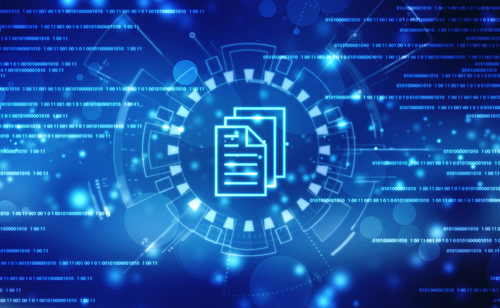Practice Management
Editor’s Note: This is Part I of a two-part series on a recent report by the Advisory Council on Employee Welfare and Pension Benefit Plans to Acting Secretary of Labor Julie Su.
Recordkeeping today is not your grandfather’s recordkeeping. Maybe not even your older sibling’s. So guidance and education from the Department of Labor (DOL) would be helpful in adjusting to the changes that have taken place, concludes a recently released report.
In “Recordkeeping in the Electronic Age,” a report to Acting Secretary of Labor Julie Su from the Advisory Council on Employee Welfare and Pension Benefit Plans, the council says that guidance and education from the DOL guidance and education are needed on a variety of issues. 

Recordkeeping has long been moving from paper-based to electronic; in fact, says the council, it’s been going on for decades. “Older paper records are continually being converted from paper to electronic files, while most newly created records are generated only electronically,” they note.
Findings
To take stock of what has become a long-term trend, the council explored:
- the reliability, accuracy and completeness of electronic records; and the long-term availability and retention of plan and participant records;
- the transfer of records when plan-level transactions occur, such as recordkeeper transitions, corporate actions and pension risk transfers;
- the length of time electronic records should remain accessible after a change in service provider; the fiduciary responsibilities of named and other fiduciaries; and
- the duties of service providers during times of transition.
The council’s findings included the following.
Implications of the shift from paper to electronic recordkeeping. This trend, says the council, has resulted in more records being created only in electronic format.
“Electronic recordkeeping has become the industry standard, offering ready access to accurate plan and participant records,” said Thomas Nash Pfeifle, Director of Regulatory Support at Transamerica Retirement Solutions, in his testimony to the council. He argued that “the transition from manual, paper-based systems to digital recordkeeping has significantly improved accessibility and security” and that “this digital shift enables efficient calculations, storage and output.” He continued, “The use of electronic recordkeeping has streamlined payroll validation, facilitating more accurate and timely transfers of participant contributions to plan trustees.”
The shift from paper to electronic recordkeeping has a variety of implications, says the council.
- Outsourcing of recordkeeping responsibilities to outside service organizations has increased, which has made it more challenging for plan sponsors to understand the scope of their recordkeeping and control responsibilities.
- There is a greater need for effective controls in the electronic environment, “because electronic records are only as good as the controls over the information systems creating and maintaining the data.”
- Historical plan records are becoming less accessible due to vendor changes and asset transfers; consequently, vendor contracts and agreements to ensure accessibility of historical records at a reasonable cost have become more important.
- The quantity of records “has skyrocketed” since plan participants use websites and other digital means to contact plans. This, they say, “generates greater participant engagement but also creates significantly more records.”
Records retention duties. Plan sponsors and fiduciaries bear the ultimate responsibility for maintaining plan records. Nonetheless, it is common for them to delegate responsibility for these functions to recordkeepers, third-party administrators (TPAs) and actuaries—who may, in turn, delegate responsibility to other entities. But—if a service provider fails to fulfill its obligations, the plan sponsor or fiduciary may still be held accountable for any recordkeeping deficiencies. In addition, there is a “general lack of understanding regarding the types of records that need to be maintained for audits and the duration for which certain records should be retained,” says the council.
Karin Peters, co-owner, President, and CEO of NEBA, a provider of third-party administrative services to multiemployer pension and welfare benefit plans, in her testimony encouraged the council to consider differences in the types and uses of electronic records in deciding whether to recommend changes that could affect how electronic records are created, used, stored or maintained.
Long-term availability of electronic records. The shift to electronic recordkeeping affects the long-term availability of plan records to meet plan audit requirements and determine whether benefits have been properly calculated and paid.
“Plan-level transactions, such as vendor changes, corporate transactions and defined benefit plan terminations, present a significant challenge to records retention and availability in the electronic age,” says the council. It adds that when a plan changes recordkeeping vendors, there are no industry standards regarding records to be maintained or procedures to be followed. In addition, they note, there is no standard for or guidance regarding how long historical records should be stored by the legacy vendor before they are purged.
The importance of controls. Electronic recordkeeping has many advantages, says the council, and it is critical that the information be authentic and reliable. Because of that, they say, “the risk of loss or manipulation of electronic data must be mitigated,” and controls may mitigate that danger
Controls “are essential in safeguarding sensitive information and ensuring the reliability, completeness and accuracy of both plan and participant statements and records,” says the council. Further, those materials are necessary for proper plan administration, calculation of benefits, and performance of plan audits.
“Controls are critical in all aspects of recordkeeping,” says the council, such as:
- accuracy of participant data;
- authorization of transactions; and
- reporting at both the plan and participant level.
In addition, the council says that there often are no source documents to substantiate electronic transactions.
“The significance of controls over electronic records cannot be overstated,” says the report.
The role of vendor contracts and service agreements. Service agreements into which plans and recordkeepers enter document the terms of service arrangements. Those agreements contain provisions regarding receiving, maintaining and accessing plan records. However, says the council, those agreements “typically contain few to no details regarding the transition of services.”
Considerations for multiemployer plans. Multiemployer plans can be found in some industries, such as construction, hospitality, entertainment, transportation, and health care. Such plans are not administered in the same manner as single or multiple employer plans, says the report.
Multiemployer fund offices and their TPAs or recordkeepers receive source documents containing participants’ personal information in a variety of ways—on paper in an electronic format, or in a combination of the two. Hard copy source documents may be maintained on-site or off-site, be converted to an electronic format, in other media, or in the cloud.
Record transfers between recordkeepers involve the transfer of all plan records, the council notes. When that takes place, the outgoing recordkeeper is required to provide all plan records to the new one. It is possible that there could be data discrepancies due if the vendors interpret plan rules differently.
Fiduciary duties concerning recordkeeping. Issues that arise during recordkeeper transitions can result in claims against plan fiduciaries and service providers due to miscalculations and misstatements of benefits, says the council. They add that sometimes, necessary information is not transferred to, or properly incorporated, into successor recordkeepers' systems for generating benefit statements or similar purposes.
Norman Stein, Senior Policy Consultant and Acting Legal Director at the Pension Rights Center and a professor emeritus at the Thomas R. Kline School of Law at Drexel University, in his testimony expressed concern over fiduciary duties as well. He called the fiduciary status of third-party recordkeepers “a significant concern.” He noted, “While a 1975 DOL interpretative bulletin suggested purely ministerial services do not result in fiduciary status, modern third-party recordkeepers often provide more than ministerial services and should be considered plan fiduciaries,” adding, “This distinction has significant consequences for a plan's named fiduciary.”

Pfeifle told the council that in his view, fiduciary standards for electronic recordkeeping should continue to be determined through a facts-and-circumstances analysis. Tomorrow's electronic recordkeeping environment may differ significantly from today’s, he added.
And recordkeeping concerns have consequences for real people, suggests Anna-Marie Tabor, a Visiting Professor of Law at the University of Massachusetts School of Law – Dartmouth and former Director of the Pension Action Center. She noted in her testimony that the quality of retirement plan recordkeeping can make or break a participant's access to benefits. In her experience, she found that the most common problem is the loss of benefits, which in nearly every instance is linked to missing or inaccurate records.
Emerging Tools and Technologies. “Emerging tools and technologies are expected to change how records are created, stored and transferred,” says the council. These include:
AI that is used to recognize patterns in speech and processes;
- APIs that make it possible to keep data in its original form, and allow two systems to communicate and exchange data in real time;
- flexible data format exchange; and
- cloud computing and storage.
Future guidance, says the council, should accommodate rapidly evolving technologies so it is up to date.
Next: Call for Guidance on Recordkeeping in the Electronic Age
- Log in to post comments
